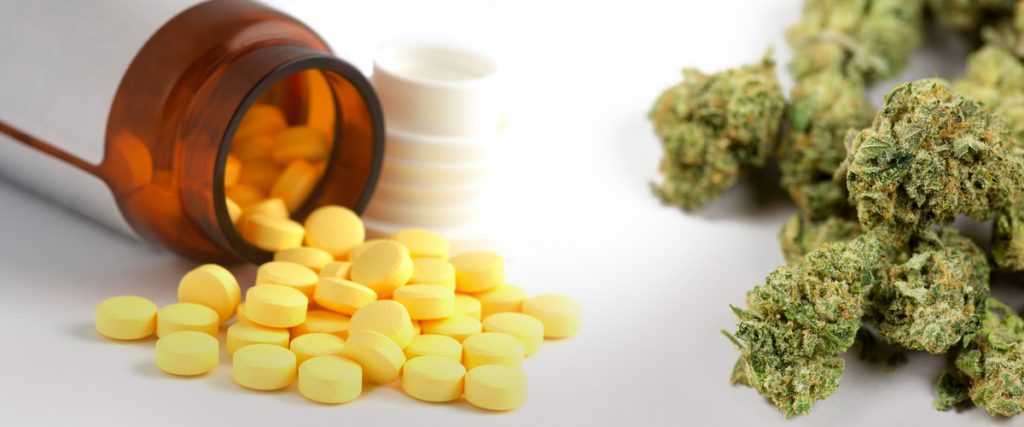Taking the two substances together could reduce the risk of dependency on opioids and minimize cognitive problems.
Combining marijuana and opioid painkillers could be a safer way to address pain, according to a new study.
Researchers from the University of Texas Health Science Center at San Antonio recently found evidence indicating that using the two together allows patients to effectively manage pain while lowering their intake of opioids, thereby reducing the risk that they’ll become addicted to the painkillers.
“These data provide additional evidence supporting the notion that opioid-cannabinoid mixtures that are effective for treating pain do not have greater, and in some cases have less, adverse effects compared with larger doses of each drug alone,” Vanessa Minervini, PhD, a postdoctoral fellow at the U-T Health Science Center, said in a press release.
Opioids are a class of narcotic drugs commonly prescribed by physicians for treating pain. The powerful drugs act on the nervous system, reducing pain messages sent to the brain. While effective, opioids are highly addictive, can slightly impair cognition, and carry a risk of fatal overdose because of how they interact with receptors in the brain.
Marijuana, legally available for pain treatment in a majority of U.S. states, can also elicit temporary side effects like impaired cognition, but has never caused a fatal overdose.
While earlier findings have indicated that pain relief is enhanced with opioids and marijuana are used together, a growing concern among some researchers was that taking the two would magnify their respective side effects.
But the new study by Minervini and her colleagues found that wasn’t the case. Combining opioids with marijuana did not significantly increase impulsivity or memory impairment.
In the study, rhesus monkeys were given “moderate doses” of morphine and CP55940, a synthetic drug that works similarity to tetrahydrocannabinol (THC), the well-known intoxicating compound naturally found in marijuana. They then had their impulsivity and memory assessed.
Minervini and her team found that while each drug impeded performance, those effects were slightly lower when the substances were given together than when given alone.

Potential Impact of Study’s Findings
Earlier findings also suggest that cannabis can reduce the intake of opioid painkillers and other prescription drugs. The new study adds to a growing body of evidence indicating that medical marijuana may play a beneficial role in addressing the nation’s opioid epidemic. According to the Centers for Disease Control and Prevention, 130 Americans on average die every day from an opioid overdose.
“The current opioid epidemic underscores the need for safe and effective pharmacotherapies for treating pain,” said Minervini. “Combining opioid receptor agonists with drugs that relieve pain through actions at non-opioid mechanisms (for example, cannabinoid receptors) could be a useful strategy for reducing the dose of opioid needed to achieve pain relief.”
Minervini presented the new research at the American Society for Pharmacology and Experimental Therapeutics annual meeting in Orlando, Florida on April 9.
More on the Medical Benefits of Cannabis
Learn more about cannabis’ promise as a viable solution for the opioid crisis in America, and visit our news page to stay on top of the latest cannabis-related research.






